
Rice is a starchy cereal grain that is consumed as a staple food in many parts of the world. Its taste and texture vary depending on what types of rice you are eating. Depending, too, on what dishes you are making you may need long-grain, medium-grain, or short-grain rice. More on that later.
Rice is generally easy to cook but if you want to further simplify it you can use a rice cooker. If you don’t have one yet or if you need to buy a new one, don’t be disheartened by the many choices out there (I know it can get confusing sometimes!), we’ve conducted a number of rice cooker reviews here. So, feel free to check them out.
This grain is usually just boiled or steamed and served plainly as a side dish to the main one that is usually rich or packed with flavors. But rice is so versatile that you can also serve it as the main dish with the help of a few ingredients and one or two spices for rice. In fact, you can practically create a number of rice dishes by simply playing with different spices!
While rice may not be your first choice of grain when it comes to nutritional content, it’s undeniable that this grain is quite popular, too. And don’t be quick to dismiss it yet because although its carb content is one of the main issues here, there are also some benefits to consuming rice.
And depending on the type of rice this grain can also boosts serious nutrients and powerful plant compounds. So, how about we get started on learning more about the different types of rice here. Let’s take a look at their respective characteristics and nutritional contents and find out, too, what we can do with them.
Types of Rice
Arborio rice
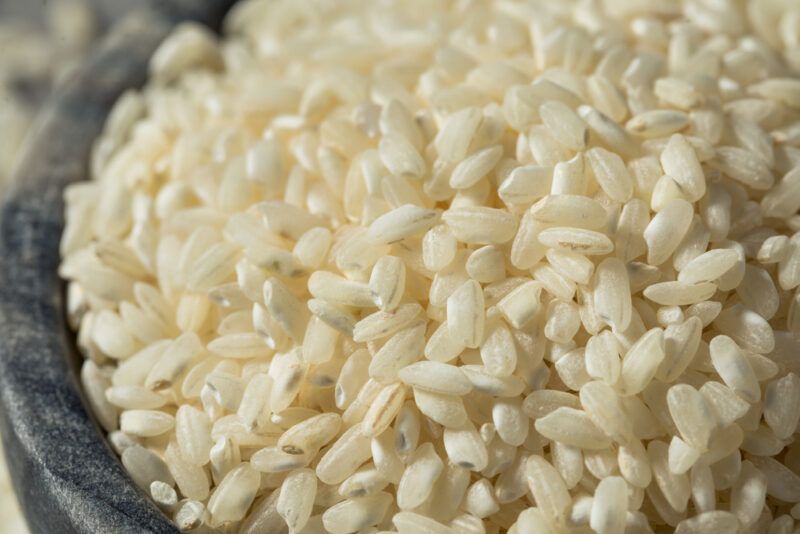
This short-grain rice is named after Arborio, a town in Italy. It’s mainly favored for its creamy texture. The taste is rather starchy – given that it’s really high in starch content. However, it’s quite good at absorbing the flavors of whatever you cook it with.
In addition to carbs, arborio rice also contains some fiber (in fact, even better when compared to other long-grain rice). And although in small amounts, it does have iron, vitamin B6, and magnesium.
Arborio rice is the popular choice of rice when making risotto. It can also be used in rice pudding, soups, paella, or arancini – an Italian fried rice balls stuffed and coated with bread crumbs.
Basmati rice
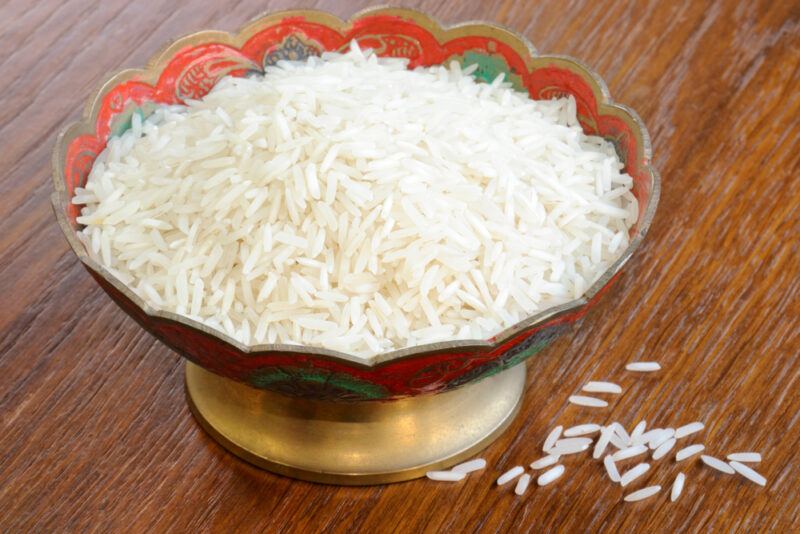
Basmati rice is a long grain and aromatic variety of rice. This rice is traditionally grown in India, Nepal, and Pakistan. It has a somewhat nutty taste with a floral aroma. Its grains are extra-long and slender compared to other long-grain rice. Basmati rice also comes in two varieties, white and brown.
Aside from carbs, basmati rice is also rich in thiamine, folate, and selenium. It also contains high amounts of amino acids. Brown basmati, in particular, is considered a whole grain so that in itself is a good thing!
In a typical Indian household, basmati rice is quite a staple – usually served with some kind of curry. And worldwide it’s also the choice of rice to use in rice pilaf or as a plain side dish. It’s also good when making fried rice seasoned with some herbs and spices.
Black rice
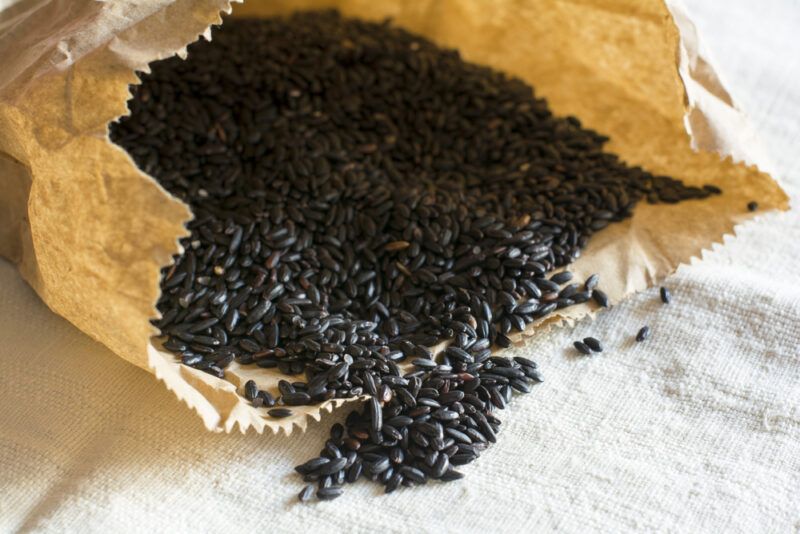
Black rice, also known as forbidden rice, purple rice, or Emperor’s rice, is a cultivated form of wild rice. It has a nutty and earthy taste with slightly more flavor compared to brown rice. Its color ranges from purplish-black to dark black.
Black rice’s dark color is due to the presence of anthocyanins which contains antioxidant properties. And in addition to its fiber content, black rice is also rich in amino acids, antioxidants, flavonoids, and other key nutrients.
You can simply serve black rice like you would white rice or brown rice. You can also use them in wraps, grain salads, rice puddings, soups, or even fried rice!
Brown rice
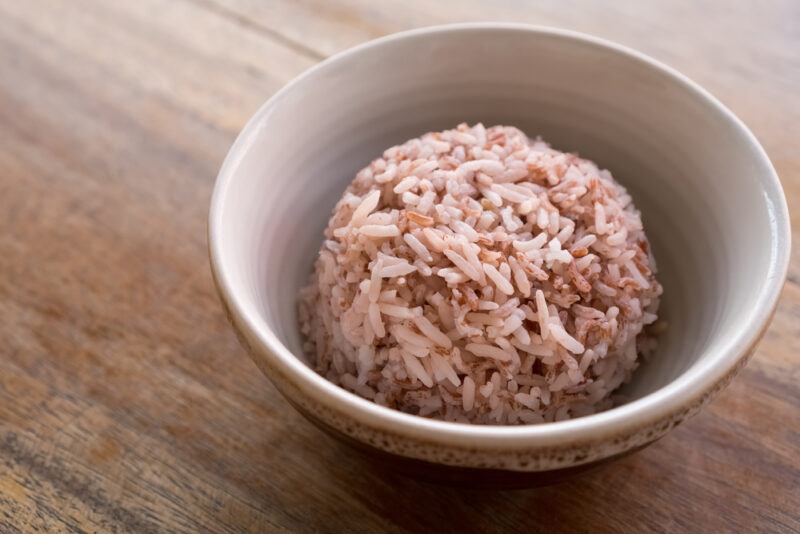
Brown rice is basically white rice before the hull, bran layer, and cereal germ is removed, making it whole grain rice – and therefore healthier. Similar to black rice, brown rice also has a slightly nutty and earthy flavor.
Brown rice, aside from being high in fiber, is also a good source of manganese, phosphorus, magnesium, selenium, vitamin B6, thiamine, niacin, and vitamin B5.
This rice is usually served as a side accompaniment to the main dish. It’s also an interesting ingredient to make pilaf, soups, salad, or even pudding.
Carnaroli rice
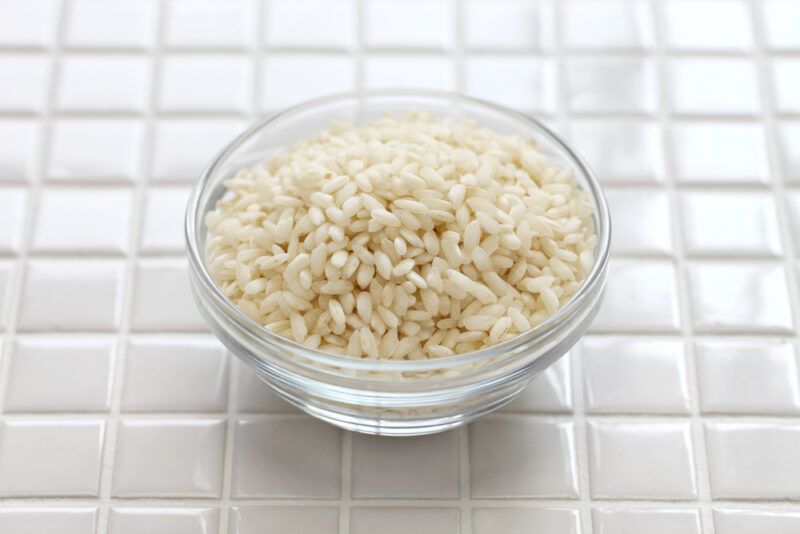
This medium-grain rice is also from Italy and is very similar to arborio rice. The latter though is quite wider, while carnaroli is longer. Carnaroli rice is also a bit starchier and also a bit firmer in texture. It is considered the ideal rice for risottos because of its creaminess and its ability to hold its shape throughout the cooking process.
Carnaroli rice contains small amounts of protein, fiber, and potassium. This grain is also considered low allergenic potential so it’s gentler to your tummy.
Again, carnaroli is perfect for risotto – it’s even considered the king or caviar of risotto rice! And with so many risotto recipes you’ll surely never run out of dishes to try. But of course, you can also use it when making paella or other similar rice dishes.
Jasmine rice
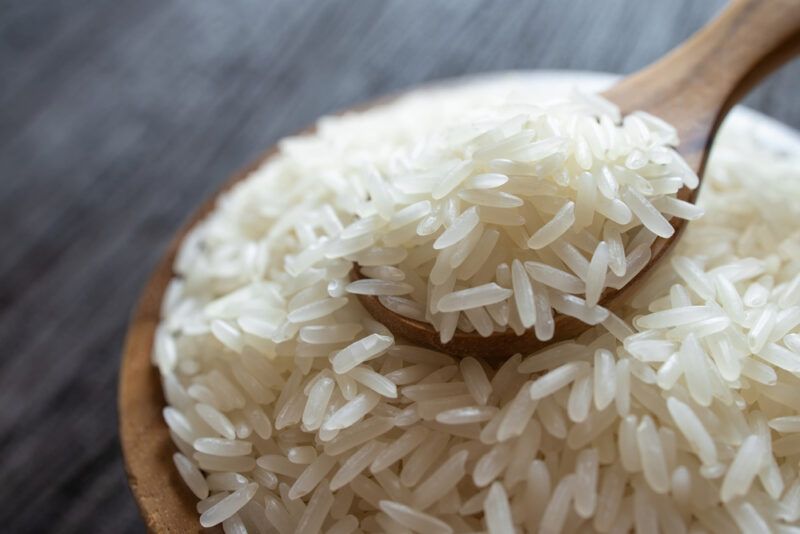
Jasmine rice is a long-grain variety of fragrant rice, the aroma of which can be compared to that of pandan. Although you may be more familiar with the white Jasmin rice, this grain also comes in a variety of colors like red, purple, and black.
The white variety has a nutritional content that is similar to white rice. However, the brown or other colored varieties are far better in terms of nutrient contents such as fiber, beneficial plant compounds, and other key nutrients.
Like most white rice, Jasmin rice will make for a great accompaniment to the main dish. It can also be used in making soups or rice porridges.
Rosematta rice
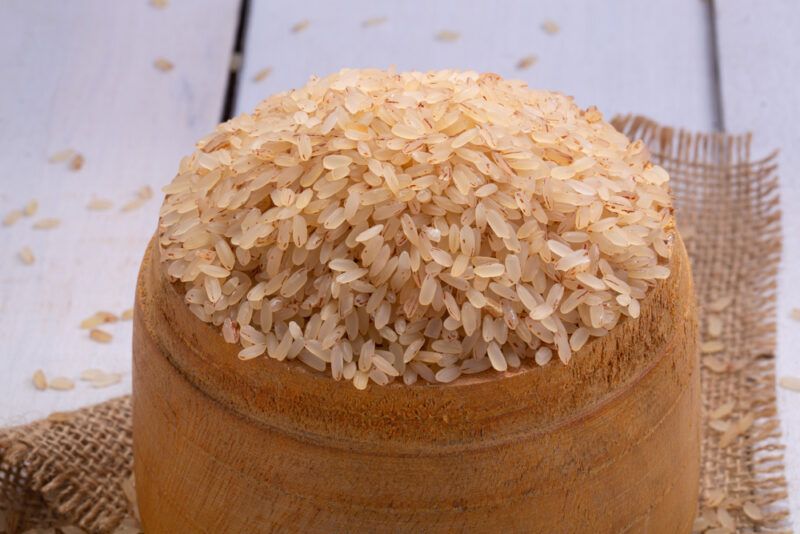
Rosematta rice, also called Kerala matta rice, red rice, or Palakkadan matta rice, is a short grain and coarse variety of rice from India. It has a somewhat rich and unique flavor that makes it a popular choice of rice on this side of Asia.
And because Rosematta comes with its outer layer intact, it’s considered healthier among other rice grains with its high fiber, magnesium, and vitamins A and B contents.
It can be served or used in dishes as you would with white rice or brown rice. But in Kerala or Sri Lanka, these grains are commonly used in making appam (pancake) or idli (savory rice cake).
Sweet rice
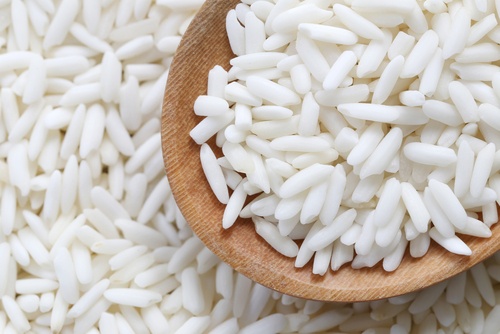
Sweet rice, also called glutinous rice, sticky rice, or waxy rice is another short-grain rice variety that also came from Asia. It particularly contains high amylopectin content that makes it super sticky once it’s cooked.
Like most white rice, sweet rice is also heavily processed that it’s left with very little fiber content, and only trace amounts of vitamins and minerals.
Sweet rice is commonly used in making savory and sweet snacks such as rice cakes. In the Philippines, it’s even used in making porridges or lugaw. There are actually a lot of sweet rice recipes from many Southeast and East Asian countries to choose from.
White rice
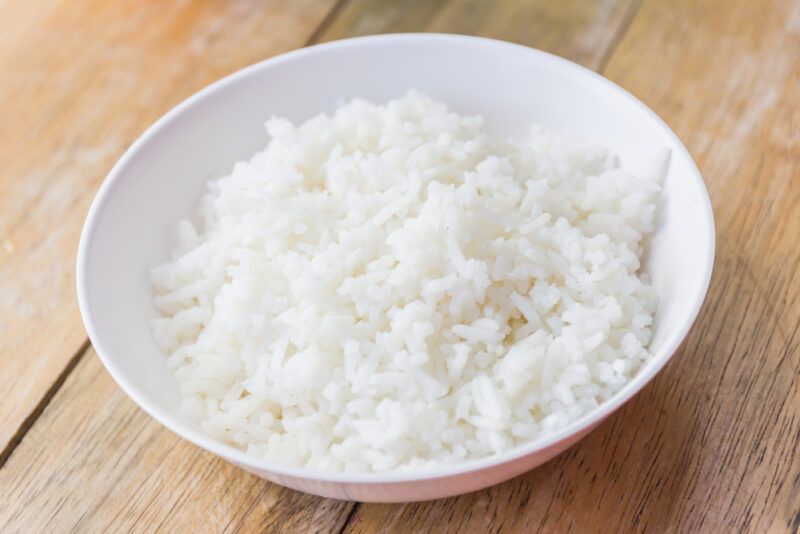
White rice is basically rice that’s been processed for its bran and germ to be removed. Aside from their white appearance, these grains are now more shelf-stable because of that. In comparison with brown rice, white rice can be stored for up to two years without any problem, while the former can only last up to six months.
But because of the milling process, white rice is also stripped of much of its fiber, vitamins, and minerals. It should be noted, however, that to remedy its lack of nutrients, some white rice is fortified with nutrients like iron and B vitamins.
White rice is commonly served as a side dish to absorb or soak up the goodness of the main dish. While some are completely fine with having plain steaming white rice as a side dish, there are also those who like to dress them up a bit – say add a few spices, some vegetable bits, and perhaps a handful of herbs as well.
Wild rice
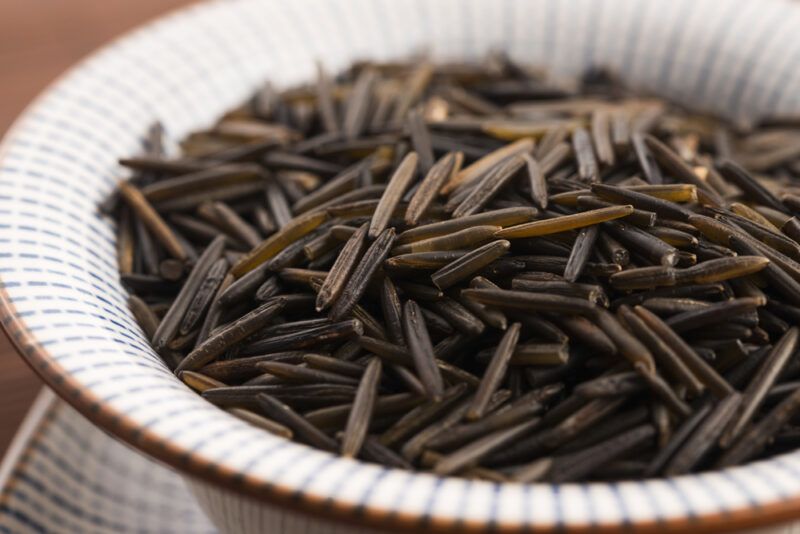
Wild rice, let’s just say is a special category of some sort. Because although it’s called rice, technically it’s not. It’s actually the grain of aquatic grass. As such, it’s best considered a rice substitute rather than a type of rice. Wild rice tastes like, well rice, but it also has a distinguishable slightly stronger flavor than that of brown rice. They come in dark brown to black color with elongated grains.
Wild rice is a good source of fiber and many vitamins and minerals. In fact, it’s even higher in protein content compared to other whole grains.
Wild rice can be used with other grains when cooking pilafs. You can also use it in grain salads, soups, desserts, casseroles, or for stuffing.
How Much Water?
There seem to be varying answers as to how much water do you really need when cooking rice. And I have to say, it would seem like any of these methods would work – you’re going to end up with cooked rice just the same. Some methods will only perhaps yield cooked rice with a texture that is more to your liking. Say, if you like your rice a little loose and fluffy, or if you prefer it to be on the softer and sticky side.
See which ones will work just perfectly for you: (This is assuming you’re cooking the most commonly eaten rice, white rice, on the stove.)
The 1:2 rice to water ratio
This means that you’ll be needing 2 cups of water for every 1 cup of rice. There is rice to water ratio calculator here that you can check out for yourself. So, every time you add a cup of rice, you just double the amount of water as well. So, if you’re going to cook 2 cups of rice, you’ll need 4 cups of water.
I haven’t tried this method yet even if it’s the most common way that is used by people I know when they cook their rice. Personally, I think the 1:2 rice to water ratio is good if you’re only cooking one cup of rice. But imagine using 6 cups of water for just 3 cups of rice? That seems a lot, don’t you think? Let us know if you’ve tried this one. Share with us what type of rice did you use, and how it turned out.
Just add .5-1.5 cups more water than your rice
Okay, it may sound confusing but it’s actually fairly simple. Unlike in the first method, this time around you simply add .5 cup, 1 cup, or 1.5 cups more water than your rice. So, if you’re cooking 2 cups of rice, you’ll need 2.5, 3, or 3.5 cups of water. If you’re cooking 3 cups of rice, then you add 3.5, 4, or 4.5 cups of water to it.
The .5-1.5 cups difference basically depends on your rice (remember even white rice has so many varieties). There are some varieties that needed more water so you can go as much as adding 1.5 cups more water than your rice. On the contrary, most varieties will cook just fine with just half a cup more water than the rice. That said, let’s say you want your rice a little on the softer side – then even if it’ll cook just fine with just .5 cup more water than rice, you can adjust it and add 1 cup more water for every cup of rice.
The index finger method
You’ve probably heard this already and have probably raised your eyebrows even! But you should really give it a try, too. It’s super simple. Just level the rice in the pot after washing it and then place your index finger in the middle of the pot touching just the top of the rice. Then start adding water until it reaches the first knuckle of your index finger. That’s it!
Again, depending on your personal preference, you may adjust the water up to the second knuckle of your index finger if you’re not really into firmer and drier rice.
Same water and rice level
This method is quite like the index finger method, but instead of measuring the water up to where the first knuckle of your index finger is – you measure the depth of the rice, and then add the same amount of water. So, let’s say, when you measured your rice, it reached the second knuckle of your finger then you’ll add water exactly up to that level as well.
Here’s how you do it. Level the rice in the pot after washing it. Then use your finger, (index or middle finger will do) and measure the depth of the rice by digging through the rice until you touch the bottom of the pot. Now mark that (you can use your thumb to do that). Now put your finger just above the rice, touching its top ever so lightly, and start adding water up to the level that you measure the rice a while ago.


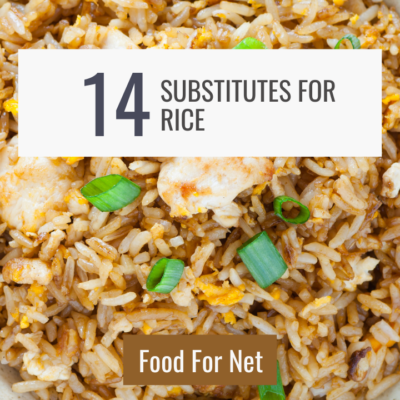
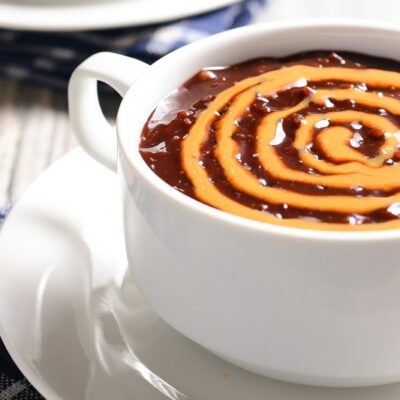
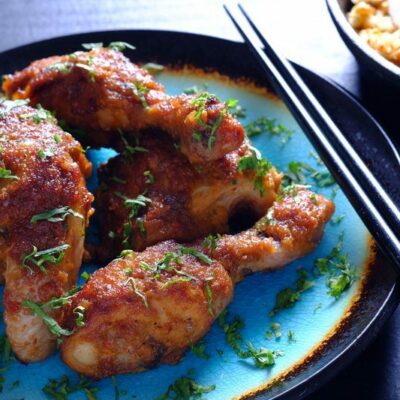
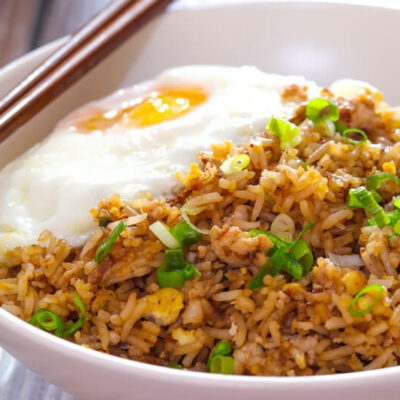

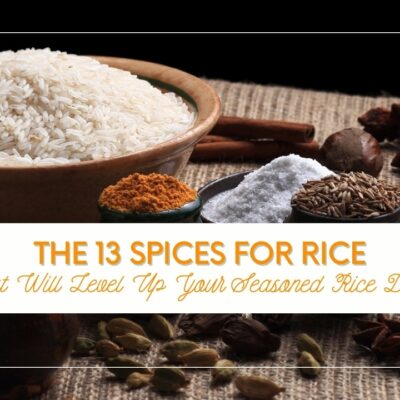
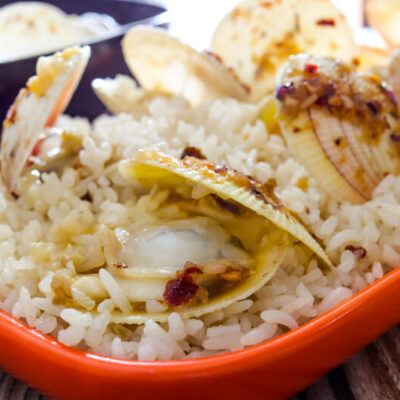
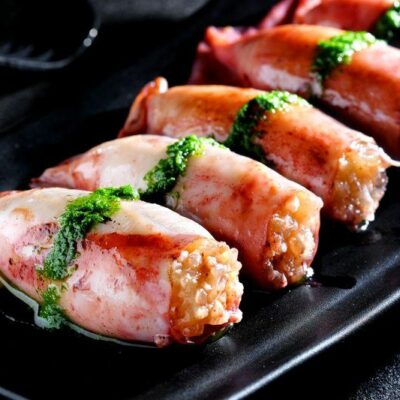
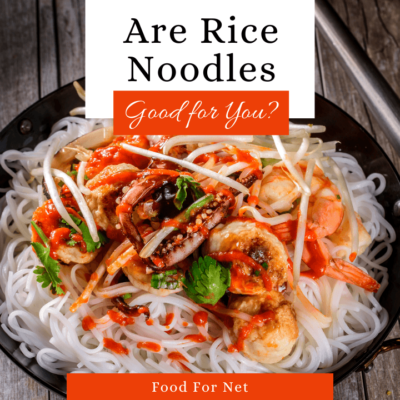
 Is Pea Protein Good For You?
Is Pea Protein Good For You?
Leave a Reply